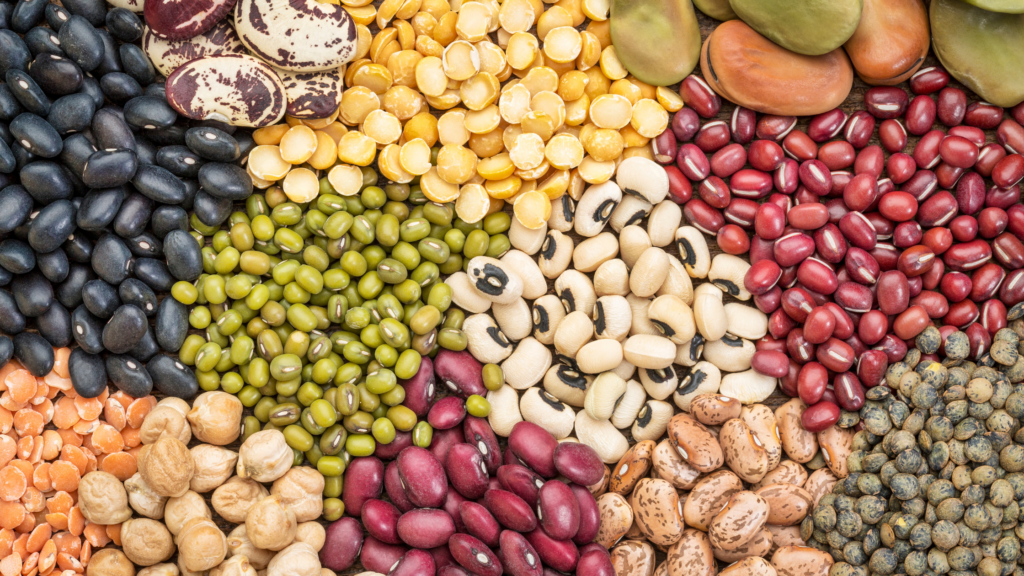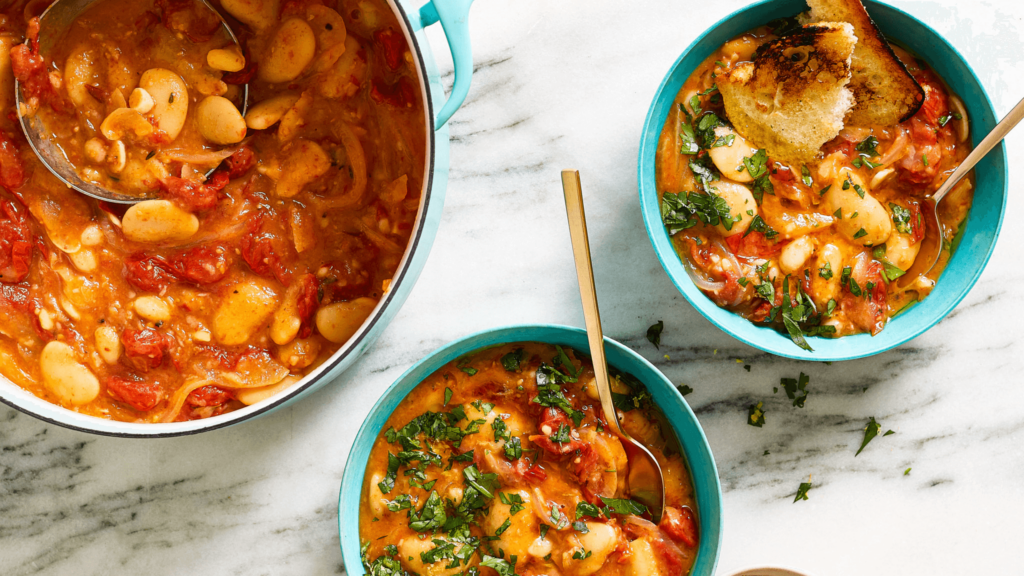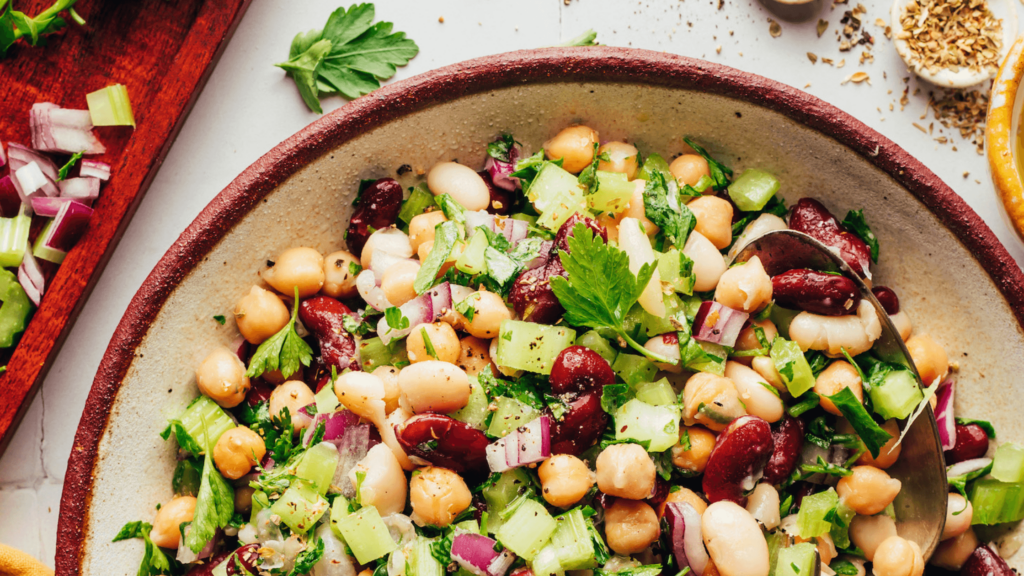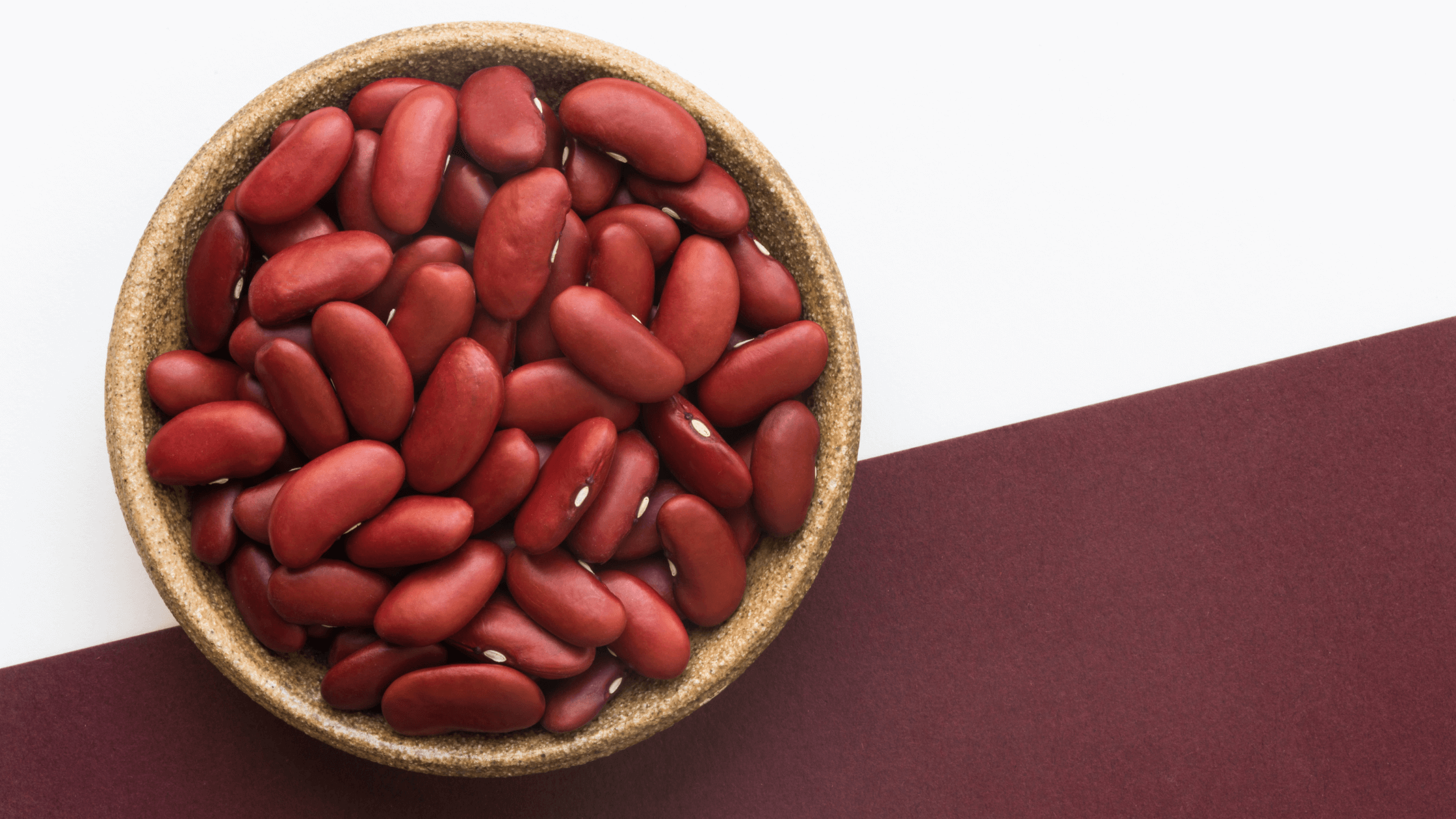Beans are nutrient-dense, versatile, and a fantastic source of fiber, protein, and complex carbohydrates. The humble bean is the chameleon of the food world, with a texture that can be crispy, crunchy, creamy, or even almost meaty, making them a perfect ingredient in just about any meal. However, if you think beans are only for chili recipes or vegetarians, you risk missing out on the incredible benefits provided by these lovely legumes. A bean-rich diet can help lower cholesterol, support a healthy gut microbiome, and boost heart health.
Quick look
- Beans are a great source of fiber, protein, and complex carbohydrates.
- Beans aren’t just for vegetarians; they make a great addition to any diet.
- Diets rich in beans can lower cholesterol, improve heart health, contribute to a healthy gut, regulate blood sugar, and support digestion.
- Canned beans offer convenience, but cooking beans from scratch can cost less and have a lower environmental impact.
Beans, beans the musical fruit: Why we love beans

Beans are a fantastic addition to any diet (even if you enjoy a great steak). They add fiber, protein, variety, and versatility to your favorite meals.
Great source of fiber
Beans are rich in fiber, a crucial nutrient most adults don’t get enough of. We often think of fiber in the context of bowel movements, but the role of this humble nutrient is much more important. A meta-analysis of over 250 studies showed that people who ate a high-fiber diet reduced their risk of dying by 16-24% compared to those who ate a low-fiber diet. And for every 8 grams of additional fiber, that risk fell by a further 5-27%.
The average cup of beans provides over 50% of your daily fiber requirements, with navy beans, black beans, and garbanzo beans (chickpeas) among the most fiber-rich sources.
Beans are also a rich source of complex carbohydrates, providing a stable energy source that can help you maintain a healthy weight, prevent type 2 diabetes, and reduce the risk of heart problems.
Endless variety
There are an estimated 400 different beans worldwide, and while you won’t find most of them on the shelves of your local grocery store, there are still dozens of varieties to enjoy.
Black beans, pinto beans, and kidney beans are commonly used in Mexican dishes, and garbanzo beans (chickpeas) play a starring role in many Indian dishes. Cannellini and white lima beans have a creamy, buttery taste that pairs well with pasta-style sauces and Italian flavors. The texture of beans can also vary drastically depending on how they’re soaked, prepared, and cooked. Oven-roasted chickpeas provide the same satisfying crunch as potato chips (and can be seasoned similarly for a great snack), while mashed beans are the perfect filling for a taco or burrito.
Limitless versatility
The variety of tastes, textures, and uses for beans make them uniquely suited for making side dishes, main courses, beverages (like soy milk), and even desserts (don’t knock Black Bean Brownies until you’ve tried ’em!). Beans fit most dietary restrictions and just about every budget, making them one of the most versatile foods in supermarkets today.
Eating beans is good for your health
Beans are great for your health. They contain fiber, antioxidants, and micronutrients to help lower cholesterol, boost protein intake, reduce blood pressure, improve gut health, and more.
Lower cholesterol
Soluble fiber lowers cholesterol by absorbing fluid and creating a gel-like substance that supports cholesterol removal from the body. Beans are high in soluble fiber, which is one of the reasons that a bean-rich diet can lower cholesterol. High cholesterol levels are a leading cause of heart disease; eating a high-fiber diet can help reduce your risk level.
Plant-based protein source
Beans are high in amino acids, making them a great source of plant-based protein with fewer calories and saturated fat than common animal-based protein sources like meat and cheese. Protein is present in every cell in the body, and getting adequate amounts is crucial for building muscles, repairing injuries, and preserving bone health.
While soybeans are the only beans considered complete proteins (containing all nine essential amino acids), you can combine beans with corn, bread, rice, cheese, and other common foods to make complete proteins.
Reduced blood pressure
One cup of butter beans contains 955 milligrams of potassium—almost a third of the recommended daily allowance for an adult male. Potassium is a mineral that decreases the effects of sodium, making it an effective method for reducing high blood pressure.
Cardiovascular disease and diabetes
Research has shown that regularly incorporating beans into your diet may prevent cardiovascular disease (CVD) and Type-2 Diabetes (T2D). A 2021 study examining the role of beans in cardiometabolic diseases concluded, “Regular consumption of legumes/beans is an important behavioral dietary strategy to reduce risk and improve comorbidities of CVD and T2D.”
Gut health
Your gut is much more than just a factory for digesting food. Recent research has shown that human digestive systems house large nerve centers that constantly communicate and relay information, leading some researchers to call the gut a “second brain.”
Studies have shown that adding beans into your diet “fosters the growth of beneficial gut bacteria and significantly enhances the production of short-chain fatty acids in the colon.” A healthy gut can reduce digestive issues, support brain health, and even help you lose weight.
Canned vs dried: What’s better?
Most beans are available in canned or dried form. Canned beans are quick and convenient. They’re ready to eat right from the can, perfect for busy nights or last-minute meals. While still budget-friendly, canned beans are more expensive than dried beans and often contain as much as 40% more sodium.
Dried beans need to be soaked—sometimes overnight—and cooked before use, and some find that beans made from scratch are a bit tougher on the digestive system. Ensuring dried beans are well-soaked before use can reduce digestive issues but requires some advance planning. However, dried beans are much less expensive than canned and allow you to tailor the amount of salt and seasonings added during soaking and cooking.
Our favorite bean recipes
If your only experience with bean-based meals is canned beans on toast, you’re in for a treat. Beans are one of the most versatile cooking ingredients in your pantry, and these recipes showcase how tasty they can be—don’t be surprised to find yourself coming back for second (or third) helpings!
Roasted Tomatoes with Cannellini Beans

If you’re new to bean-based meals, this roasted tomatoes and cannellini beans recipe is a great place to start. Created by registered dietician Bridgette Blakey, this dish comes together in under 30 minutes and bursts with flavor, umami, and nutrient-dense goodness.
To make this recipe, cannellini beans (sometimes known as white kidney beans) are simmered in a savory sauce made from oven-roasted tomatoes, onions, garlic, coconut milk, and spices. Serving with toasted French bread or sourdough makes this meal with a complete protein and allows you to mop up every last bit of the delicious sauce.
Black Bean Burger

Oddly enough, one of our favorite bean burger recipes comes from a website better known for its baking. Sally’s Baking Addiction said it all when they called this recipe The Best Black Bean Burger I’ve Ever Had—these burgers turn out so juicy, spicy, and filling, we think you’ll agree.
These bean burgers combine ingredients you’d expect to see in a bean burger recipe (black beans, onion, garlic, spices) with some you might not (feta cheese, eggs, and Worcestershire sauce). They take 30 minutes to make and freeze well for up to three months, making them perfect for meal prep.
Note: This recipe is not vegan or vegetarian due to the inclusion of Worcestershire sauce and eggs. The recipe notes offer alternatives for those who wish to avoid these ingredients.
Three-Bean Salad

Sometimes, you just don’t feel like cooking, especially during the dog days of summer when the last place you want to be is in front of a hot stove. This Easy Three-Bean Salad from Minimalist Baker takes just 10 minutes, uses one bowl, and keeps in the fridge for up to five days—perfection! Mix cannellini beans, red kidney beans, and chickpeas with chopped celery, red onion, and parsley before seasoning with olive oil, red wine vinegar, a touch of maple syrup, and spices.
Bottom line
Beans really are a magical fruit—er, legume—but not for the reasons we’re all used to singing about. These powerful pulses are inexpensive, nutritious, healthy, and versatile. They can make you healthier, stronger, and less susceptible to cardiovascular disease and diabetes—all while tasting delicious. If you’re guilty of leaving bean-based meals to plant-based eaters (or not eating them enough as a vegan or vegetarian), it’s time to rekindle your love for beans.
Ready to learn more about health hacks, top tools, and all the latest construction news? Sign up for our free newsletter, or follow us on social media!


